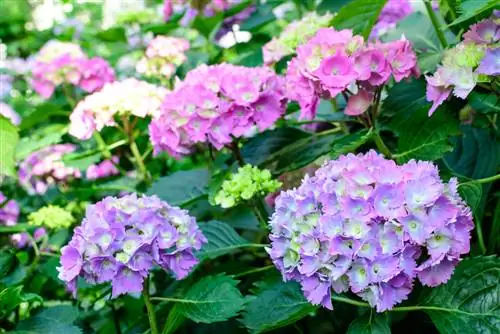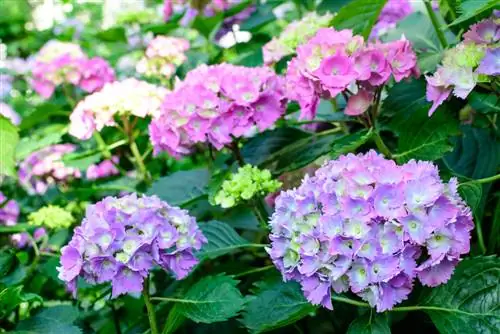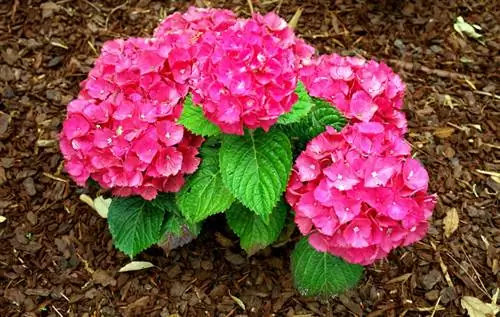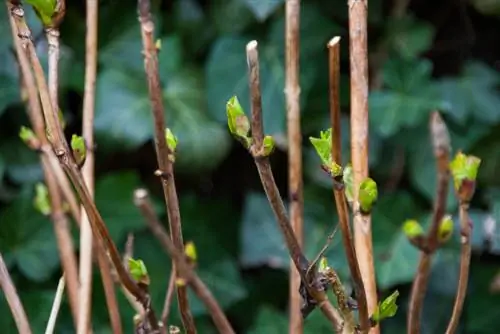- Author admin [email protected].
- Public 2023-12-16 16:46.
- Last modified 2025-01-23 11:22.
Farmer hydrangeas are among the most popular ornamental plants in the garden. You can find out in this text whether bees also enjoy the impressive flowers.

Are farmer's hydrangeas useful for bees?
Farmer hydrangeas offer no benefit to bees because their ball flowers are not sources of nectar or pollen. Alternatively, you can plant bee-friendly hydrangea species such as mountain hydrangea, climbing hydrangea, panicle hydrangea and velvet hydrangea, which provide nectar and pollen for bees.
Is farm hydrangea useful for bees?
The blue or white-flowering farmer's hydrangea hasno use for bees This is because the impressive ball flowers are infertile false flowers that produce neither pollen nor nectar. The nectar and pollen-producing flowers of the garden hydrangea lie beneath the ball flowers. Since the latter are too close together, they block insects' access to the "bee-friendly" flowers.
Why do bees settle on the farmer's hydrangea?
If you see bees on the ball flowers during the flowering period of farmer's hydrangeas, the insects usually use them as awater source, as dew drops collect in the false flowers. The workers use the water they find to
- quench your thirst and
- cooling the hive in summer.
Which alternative to the farmer's hydrangea is suitable for bees?
Among the hydrangeas, the following bee- and insect-friendly species are available at the location of the garden hydrangeaas an alternative:
- Mountain hydrangea (Hydrangea serrata)
- Climbing hydrangea (Hydrangea petiolaris)
- Pranicle hydrangea (Hydrangea paniculata)
- Velvet hydrangea (Hydrangea aspera)
Tip
Difference between farmer's hydrangea and plate hydrangea
Since the farmer's hydrangea was bred from the plate hydrangea, the latter can be called the ancestor of the garden hydrangea. Hydrangeas can be recognized by their flat, plate-shaped inflorescences. The real flowers of the plate hydrangea are located inside the plate and allow bees access to nectar and pollen.






